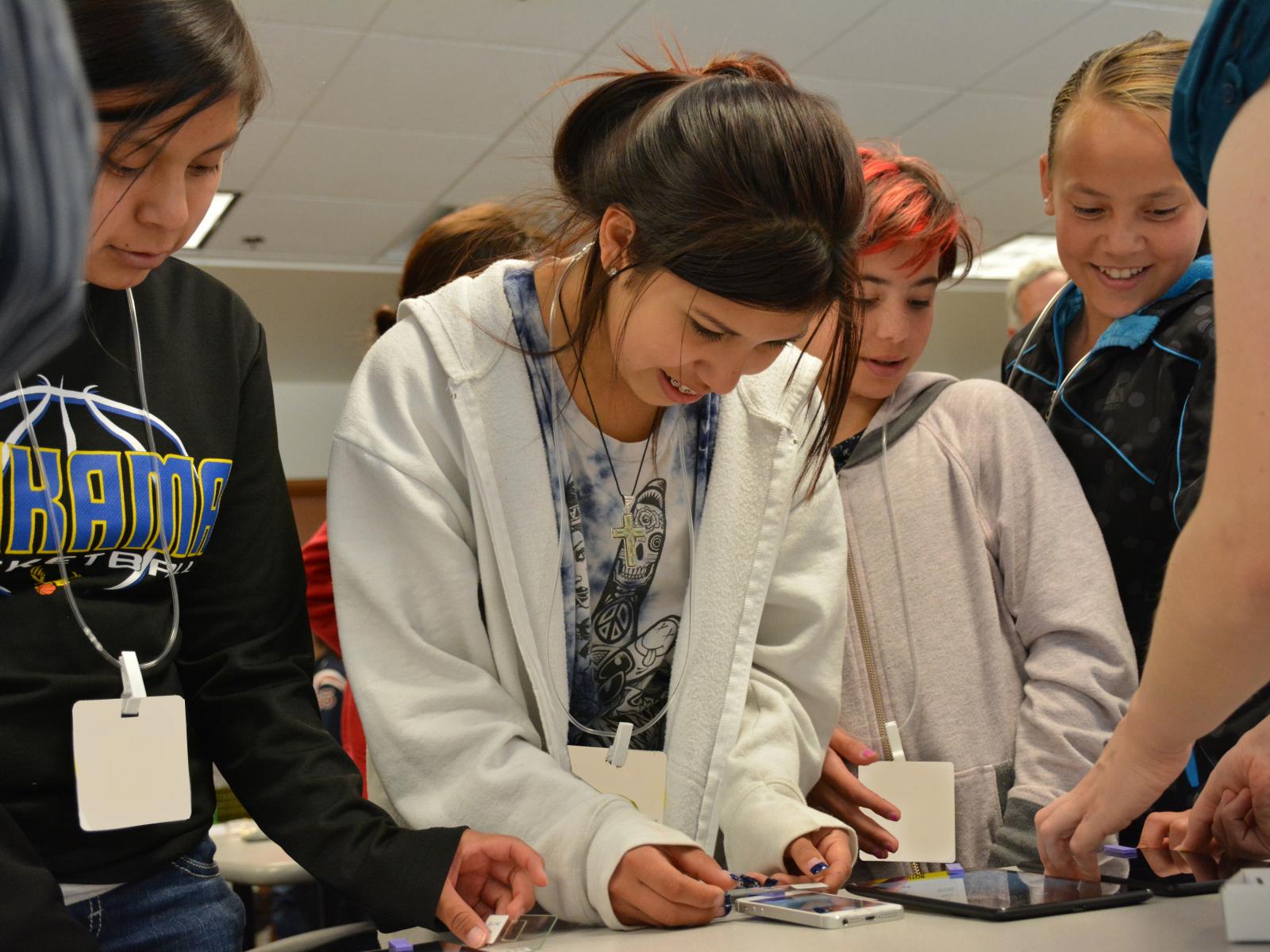By Melissae Fellet
That transformation enables hands-on learning experiences, which are especially vital during a time when many students are adapting to virtual and hybrid classroom environments.
Engineers at Pacific Northwest National Laboratory (PNNL) developed an inexpensive, do-it-yourself smartphone microscope as a modern take on one of the earliest microscope designs. It is now being incorporated into lesson plans that are making their way into the hands of historically underserved and rural student populations across the country. Packing 100x magnification in a low-profile device, the smartphone microscope offers a glimpse at the tiniest details of our world, from the shape of salt grains, to pollen on flowers, and strands of hair.
Thanks to the strength of community partnerships between national laboratories and members of their local communities, young minds are being equipped with the types of immersive experiences in science, technology, engineering, and mathematics (STEM) that leave a lasting imprint.
“Ideas in science and engineering start with observing the world,” said Elizabeth Stephens, a senior STEM education consultant at PNNL. “From those observations, you can begin asking questions to understand why or how things function or behave.”
From Alaska to the Mountain West
Last year, the U.S Department of Energy, Office of Nuclear Energy worked with regional partners to ship more than 1,000 smartphone microscopes to students around the country, including remote areas of New Mexico, Colorado, and Alaska. Many went to U.S. tribal communities where access to resources for STEM education can be scarce. The accompanying lesson plan provided an overview of the history of microscopes and their function, a way to connect the 3D printing of the microscope to facets of nuclear technologies that employ the same technology, and ideas for activities to encourage students’ love of learning.
Students examined objects they found personally or culturally relevant to them, including the porous structure of whale bone and pointy edges of a snowflake.
One student from the Pueblo of Picuris, north of Santa Fe, New Mexico, said: “With my mini microscope, I was able to look at household items, plants in the house, dead moths, spider webs, and things I found outside. Oh the things we can see up close!”
Another said, “My mini microscope gave me a whole new way to look at things on the go!”
Around Washington State
Now, PNNL is working with school districts throughout the Mid-Columbia region and Sequim to distribute 4,200 STEM kits to 6th grade students. These kits will contain the smartphone microscope along with other materials related to microscopy. Associated lesson plans will guide students through exploring the world around them, using a variety of scientific tools to help them see and understand where science and engineering ideas originate.
The lessons also contain smartphone microscopy images so that students can complete learning activities without a smartphone.
“By observing nature and the world around them, students can develop ideas and be inspired about ways to design other materials,” Stephens said.
Visit this site to download files to print your own smartphone microscope or download a printable flyer about the device.



